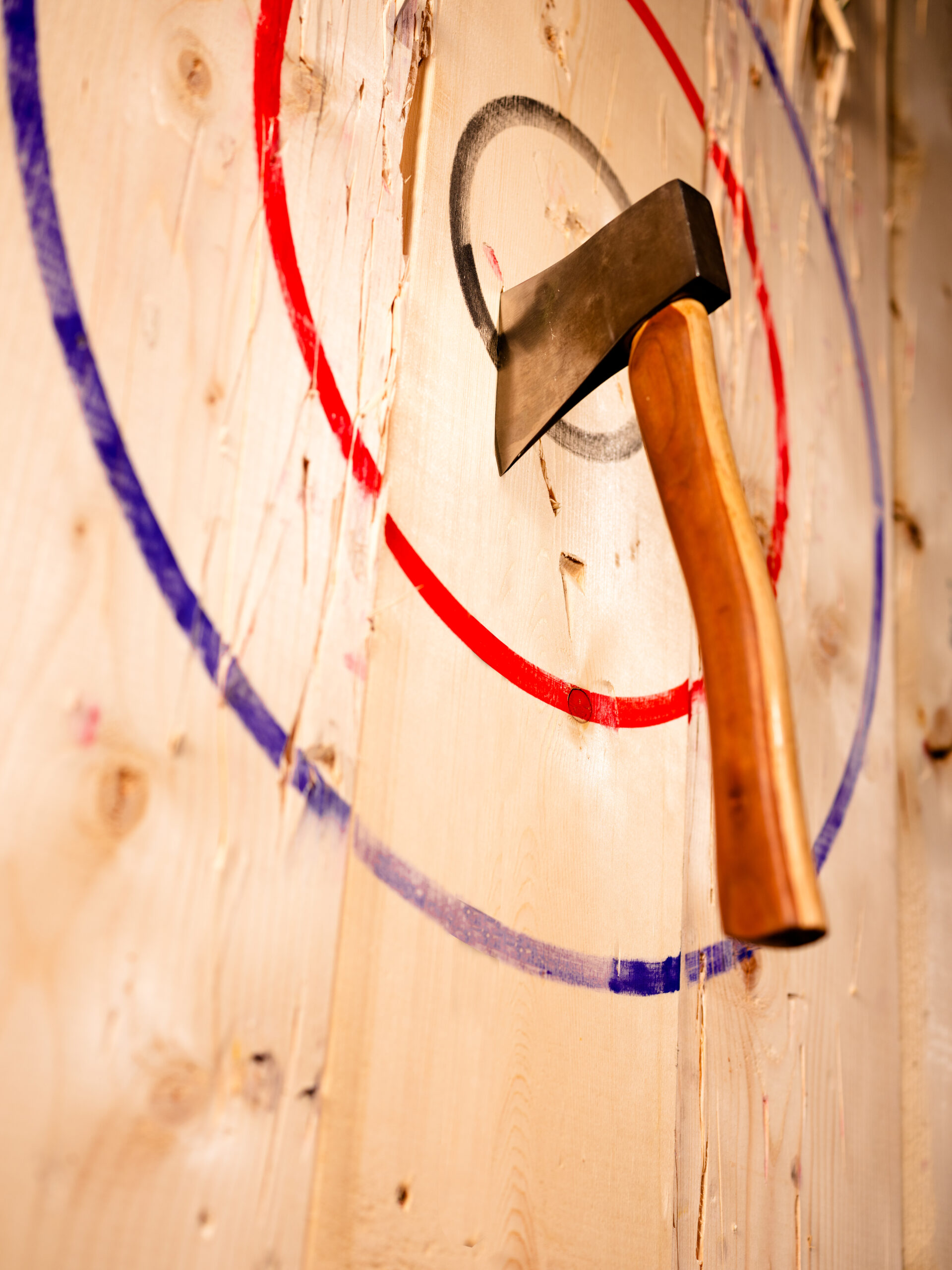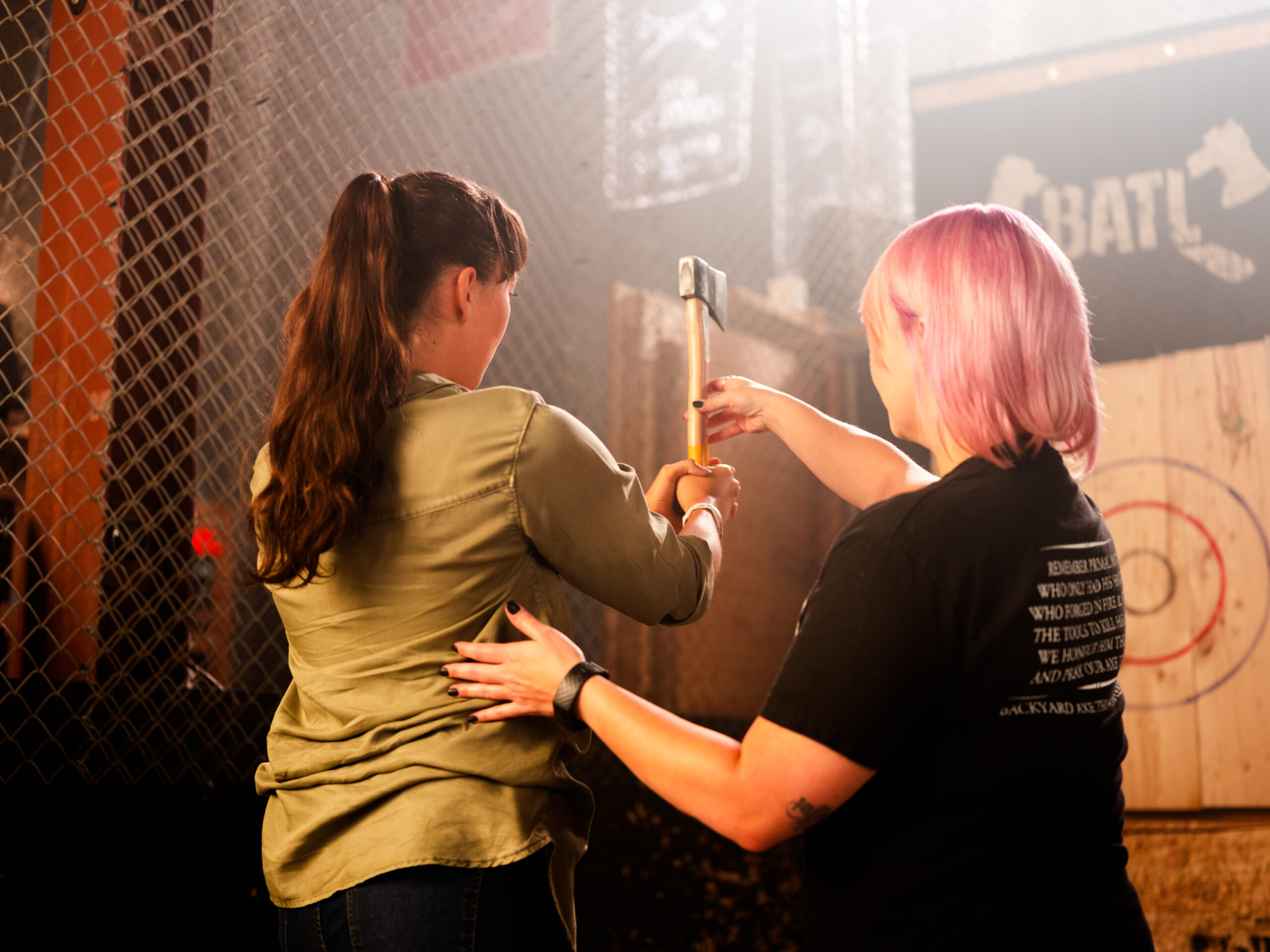AXES AND THE HISTORY OF THE AXE
Axes have been especially prevalent these days, with the emergence of the sport of axe throwing across the world – but it’s a well-known fact that axes have been used for thousands of years for much more than throwing. It’s one of the oldest tools used by mankind, after all. Before the modern axe, the stone-age hand axe was used without a handle – only later to be fastened to a wooden handle.
The earliest examples of handled axes have heads of stone with some form of wooden handle attached in a method to suit the available materials and use. Axes made of copper, bronze, iron and steel appeared as these technologies developed. Axes these days are composed of a head and a handle.
In folklore, stone axes were sometimes believed to be thunderbolts and were used to guard buildings against lightning, as it was believed (mythically) that lightning never strikes the same place twice. This has caused some skewing of axe distributions. Steel axes were important in superstition as well. It was rumoured that a thrown axe could keep off a hailstorm.
Sometimes an axe was placed in the crops with the cutting edge to the skies to protect the harvest against bad weather. An upright axe buried under the sill of a house would keep off witches, while an axe under the bed would “assure male offspring.”

AXE THROWING IN ENTERTAINMENT
Axes are also predominant in Viking culture, as evidenced when Alex Høgh Andersen, better known as Ivar the Boneless from History TV’s hit show Vikings, visited our BATL Toronto location to film a segment in anticipation of the upcoming new season. It’s no surprise that he was a natural.
Most modern axes have steel heads and wooden handles, typically hickory in the US and ash in Europe and Asia, although plastic or fibreglass handles are also common. Modern axes are sorted by use, size and form. Hafted axes with short handles designed for use with one hand are often called hand axes, scout axes, or hatchets – but the term hand axe refers to axes without handles as well. Hatchets tend to be small hafted axes often with a hammer on the backside (the poll). As easy-to-make weapons, axes have frequently been used in combat.


MODERN DAY AXE THROWING
It’s been 16 years since the BATL Axe Throwing brought urban axe throwing to the masses, using the axe as a tool to bring people together. Back in 2006, a group of friends were bored at a cottage outside of Toronto and decided to throw an axe at a stump. Little did they know that this innocent way to pass the time would soon evolve into the creation of a worldwide sport.
BATL AXE THROWING
Upon returning home to Toronto, BATL founder and CEO Matt Wilson decided to set up a target in his backyard and invite some friends over to show them just how cathartic throwing a sharp axe into wood could be. A point system was created, and soon enough a group of 8 friends would meet every week and engage in some friendly competition. 8 friends quickly grew to 16, and 16 quickly grew to 32. Before he knew it, Matt was hosting 2 full leagues of a total of 60+ per night in his backyard, not including all the spectators that would stop by to catch a glimpse of our exciting new sport.
It didn’t take long before the BATL Axe Throwing had outgrown its very own backyard. As you can imagine, putting that many people in a small outdoor space together got very loud very fast, and noise complaints were coming to a frequent issue. Not to mention, word had spread throughout the city so fast that the waitlist to join a league was becoming never-ending. In 2011, BATL moved its operations indoors and secured an industrial space in the west end of Toronto. We instantly had leagues running four nights a week, and soon after opened up to private group bookings (perfectly suited for bachelor and bachelorette parties, adult birthdays, corporate team building, or a night out with friends). With 18 locations across North America (including Toronto, Vaughan, Pickering, Ottawa, Niagara Falls, London, Hamilton, and Calgary in Canada; in addition to Novi, Nashville, Scottsdale, Houston, Orlando, Charlotte, and Chicago in the United States – with more on the way!).
Since BATL Axe Throwing began its expansion, you can find axe-throwing venues popping up all over the world – but only BATL can lay claim to inventing the sport of urban axe throwing.
Looking to join in on the fun and experience the thrill of axe throwing for yourself? BATL Axe Throwing offers both casual and premium throwing experiences for groups from 2-200 (depending on the location). You can expect the very thing that BATL Axe Throwing has become world-famous for: the best one on one throwing instruction from our Clutch Academy certified and friendly staff members, followed by up to 2 hours of throwing time for your group. Your safety is our main concern, so you can rest assured that you’ll always feel comfortable throwing axes with our coaches on hand. All BATL locations also offer complete bar and food ordering services, which means even less planning for you.
If you’re looking for something a little more casual, BATL Axe Throwing offers public walk-in sessions – no advance booking required. It’s the perfect way to test the water when it comes to axe throwing, with little commitment. Our expert coaches are on hand to guide you the whole way, so whether you’re new to the sport or looking to hone in on your skill we’ve got you covered.
If you think axes are just for chopping wood, you’ve got it all wrong! Head to your nearest BATL venue and see for yourself what else you can do with an axe.
